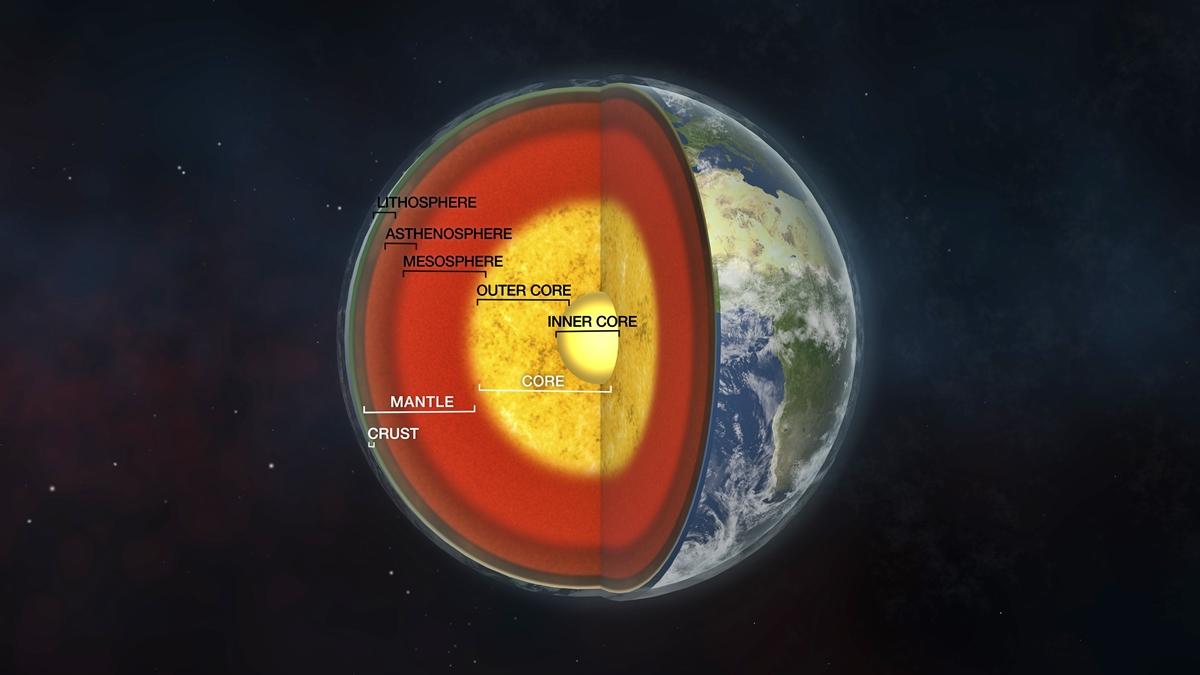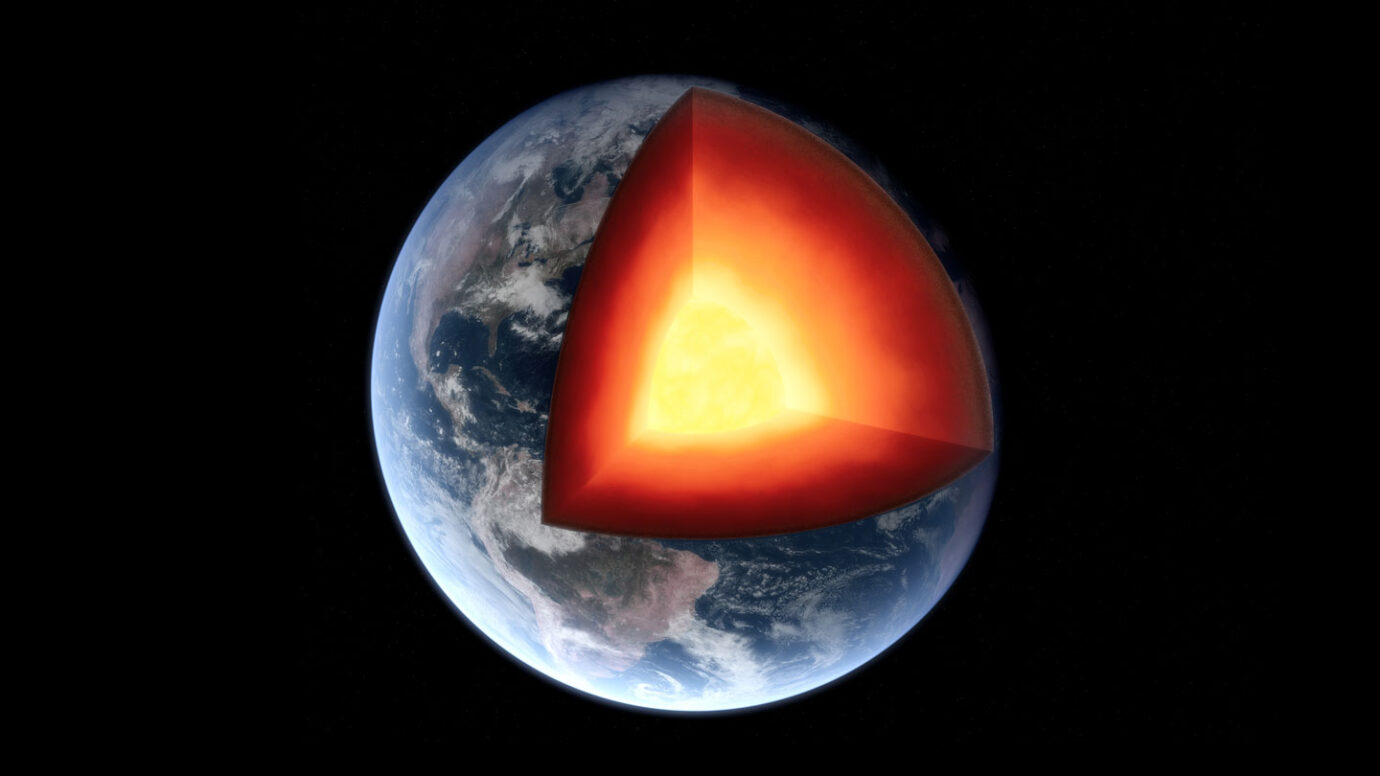
Earth’s inner core has lately stopped spinning, and may now be reversing the direction of its gyration, according to a surprising new study that probed the deepest rung of our earth with seismic swells from earthquakes.
The mind- boggling results suggest that Earth’s center pauses and reverses direction on a periodic cycle lasting about 60 to 70 times, a discovery that might break longstanding mystifications about climate and geological marvels that do on a analogous timeframe, and that affect life on our earth.
Of course, it must be noted this is more or less the plot of the 2003 disaster film The Core, but there’s no need to worry about preventing an impending catastrophe by nuking the center of Earth. While the core’s gyration influences Earth’s face terrain, scientists suppose this periodic spin switch is a normal part of its geste that doesn't pose pitfalls for life on our earth.
How Hot is the Inner Core of Earth ?

Earth’s inner core is a solid essence ball that's 75 percent the size of the Moon. It can spin at different pets and directions compared to our earth because it's nestled within a liquid external core, but scientists aren't sure exactly how fast it spins or whether its speed varies over time.
Located some,000 long hauls beneath our bases, the core gests similar violent pressures that it's likely as hot as the face of the Sun. Because it's so remote and delicate to study, the inner core remains one of the least understood surroundings on our earth, though it’s clear that it plays a part in numerous processes that make our world inhabitable to life, similar as the generation of Earth’s defensive glamorous field, which blocks dangerous radiation from reaching the face.
Now, Yi Yang and Xiaodong Song, a brace of experimenters at Peking University’s SinoProbe Lab at School of Earth and Space lores, have captured “ surprising compliances that indicate the inner core has nearly desisted its gyration in the recent decade and may be passing a turning- reverse in a multidecadal oscillation, with another turning point in the early 1970s, ” according to a study published on Monday in Nature Geoscience.
“ There are two major forces acting on the inner core, ” Yang and Song said in an dispatch to Motherboard. “ One is the electromagnetic force. The Earth’s glamorous field is generated by fluid stir in the external core. The glamorous field acting on the metallic inner core is anticipated to drive the inner core to rotate by electromagnetic coupling. The other is graveness force. The mantle and inner core are both largely miscellaneous, so the graveness between their structures tends to drag the inner core to the position of gravitational equilibrium, so called gravitational coupling. ”
still, the inner core will accelerate or brake, ” they added, “ If the two forces aren't balanced out. “ Both the glamorous field and the Earth’s gyration have a strong periodicity of 60- 70 times. We believe that the proposed 70- time oscillation of the inner core is driven by the electromagnetic and gravitational forces. ”
Mystifications of Inner Earth Core
Xiaodong Song has spent decades trying to unravel the mystifications of the inner core by studying seismic swells that pass through this distant region. He was part of the platoon that first reported substantiation of the inner core’s gyration in 1996 by measuring slight time( or “ temporal ”) changes in these swells, which are generated by earthquakes.
still, the origin of the temporal changes has been a matter of debate within the geoscience community ever ago, as some scientists suppose the surge patterns arise from marvels at the boundary between the external and inner core.
“ Some experimenters are still arguing that the temporal changes don't come from the inner- core gyration, but from localized distortion at the inner core boundary, ” Yang and Song said. With their new study, the brace “ tried to gather further data over a longer duration to test different models. ”
To that end, the platoon studied seismic swells that passed through the inner core made by earthquakes that passed since the 1960s. In particular, they looked for “ fellow ” events, which are “ repeating earthquakes with nearly identical waveforms at common receivers, ” according to the study. By assaying the slight temporal changes between these equivalents, Yang and Song were suitable to probe the gyration of the inner core.
As it turned out, the temporal changes reached a minimum around 2009, suggesting that the inner core had broke gyration around this time, creating seismic compliances that feel further static. The platoon was indeed more astonished when they linked a analogous turning point in the early 1970s, intimating that the core stops and reverses gyration on a periodic cycle.
“Our results farther support the inner- core gyration, and more interestingly, reveals the multidecadal pattern of the gyration,”
Yang and Song said to Motherboard.
The results offer an unknown look at the searing hole of our earth, a region that continues to shirk clear explanation, and it also has big counteraccusations for understanding the familiar world we inhabit on Earth’s face.
For case, the platoon notes that the same multidecade cycle has also been observed in Earth’s climate system, as global mean temperatures and ocean position rises appear to oscillate every 60 to 70 times. The length of Earth’s day, which shifts slightly over time, also seems synced to the proposed cycle. For this reason, the new findings “ may indicate dynamic relations between the deepest and shallowest layers of the solid Earth system, ” according to the new study.
“ We refocused the actuality of analogous periodicity of different compliances, forming a resonating system, ” Yang and Song told Motherboard. “ The relation, still, is less clear at the moment. The gravitational coupling between the inner core and the mantle may beget distortion at the Earth’s face, which would affect the ocean position. The changes of the ocean position and the Earth’s gyration may affect the global atmosphere rotation and temperature. The resonance of different systems may also amplify the collective relations. ”
It’s tantalizing to imagine that our most mundane gests similar as the length of our days, and the climatic patterns that guide our original rainfall — might be carved by the rotational cycles of a weird essence ball at the center of our world. Untangling these nuances will bear new models and continued compliances of Earth’s enigmatic central realm.
The coming way are “ to make quantitative models of the physical mechanisms on themulti-decadal oscillation system ” and “ to cover how the gyration changes in the future, ” Yang and Song said.
“ We ’d anticipate it to rotate westwards relative to the face of the Earth in the coming times and decades, ” the brace concluded. “ Seismic swells are still the stylish way and therefore nonstop operation of high- quality seismic networks is pivotal in this regard. ”





